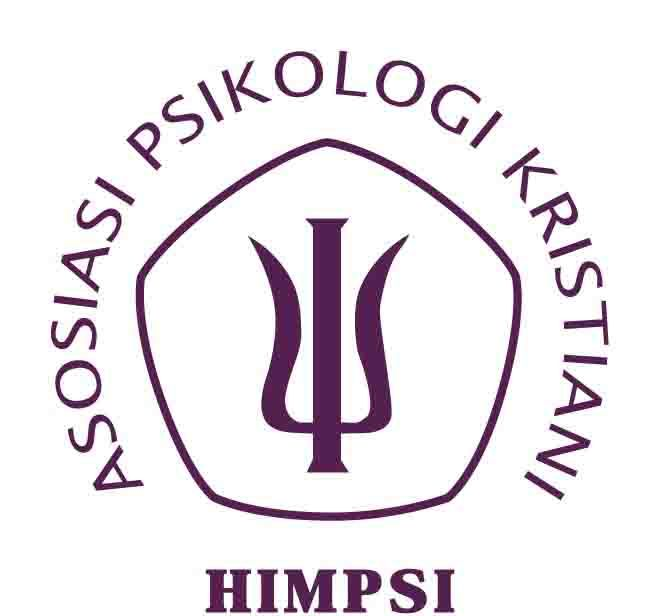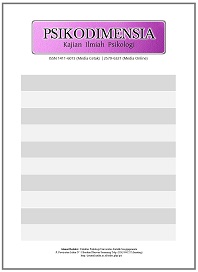Merasa Dicintai Saat Dibantu: Penelitian Survey Deskriptif “Five Love Languages”
Abstract
Kata kunci: survey deskriptif, studi kuantitatif, bahasa cinta, acts of service
Keywords
Full Text:
download PDFReferences
Arikunto, S. (2006). Prosedur penelitian: Suatu pendekatan praktik. Jakarta : Rineka Cipta.
Chapman, G. (2010). The 5 love languages: The secret to love that lasts. Chicago, IL: Northfield Pub.
Choy, L. T. (2014). The strengths and weaknesses of research methodology: Comparison and complimentary between qualitative and quantitative approaches. IOSR Journal of Humanities And Social Sciences, 9 (4), 99-104.
Cook, M. Pasley, J., Pellarin, E., Medow, K., Baltz, M., & Buhman-Wiggs, A. (2013). Construct validation of the five love languages. Journal of Psychological Inquiry, 18 (2), 50-61.
Egbert, N. & Polk, D. (2006). Speaking the language of relational maintenance: A validity test of Chapman’s (1992) five love languages. Communication Research Reports, 23 (1), 19-26.
Esler, W. K. & Dziuban, C. D. (1974). Criterion referenced test: Some advantages and disadvantages for science instruction. Science Education, 58(2), 171-174.
Hunsley, J. & Lee, C. M. (2014). Introduction to clinical psychology: An evidence-based approach (3rd ed.). Toronto: John Wiley & Sons.
Margono. (2004). Metodologi penelitian pendidikan. Jakarta : Rineka Cipta.
Masten, C. L., Telzer, E. H., Fuligni, A. J., Lieberman, M. D., & Eisenberger, N. I. (2012). Time spent with friends in adolescence relates to less neutral sensitivity to later peer rejection. Social Cognitive And Affective Neuroscience, 7(1), 106-114.
Mosavi, S. E. & Iravani, M. R. (2012). A study on relationship between emotional maturity and marital satisfaction. Growing Science, 2(3), 927-932.
Polk, D. M. & Egbert, N. (2013). Speaking the language of love: On whether Chapman’s (1992) claims stand up to empirical testing. The Open Communication Journal, 7, 1-11.
Schwarzer, R., & Jerusalem, M. (1995). Generalized Self-Efficacy scale. In J. Weinman, S. Wright, & M. Johnston, Measures in health psychology: A user’s portfolio. Causal and control beliefs (pp. 35-37). Windsor, UK: NFER-NELSON.
Schwarzer, R. & Hallum, S. (2008). Perceived teacher self-efficacy as a predictor of job stress and burnout: Mediation analyses. Applied Psychology: An international review, 57, 152-171.
Scholz, U, Doña, B. G., Sud, S., & Schwarzer, R. (2002). Is general self-efficacy a universal construct? European Journal of Psychological Assessment, 18 (3), 242-251.
Sugiyono. (2013). Metode penelitian kuantitatif, kualitatif, dan R&D. Bandung: Alfabeta.
Surijah, E. A. & Sari, K. (in press). The (not so) perfect five: Love languages and personality factors. Anima Indonesian Psychological Journal.
Surijah, E. A. & Septiarly, Y. L. (2016). Construct validation of five love languages. Anima Indonesian Psychological Journal, 31 (2), 65-76.
Telzer, E. H., Fuligni, A. J., Lieberman, M. D., Miernicki, M. E., & Galván, A. (2015). The quality of adolescents’ peer relationships modulates neural sensitivity to risk taking. SCAN, 10, 389-398.
Tompsett, C. J., Veits, G. M., & Amrhein, K. E. (2016). Peer delinquency and where adolescents spend time with peers: Mediation and moderation of home neighborhood effects on self-reported delinquency. Journal of Community Psychology, 44(2), 263-270.
DOI: https://doi.org/10.24167/psiko.v16i1.946
Print ISSN : 1411-6073 | online ISSN : 2579-6321 View My Stats

This work is licensed under a Creative Commons Attribution 4.0 International License.




















